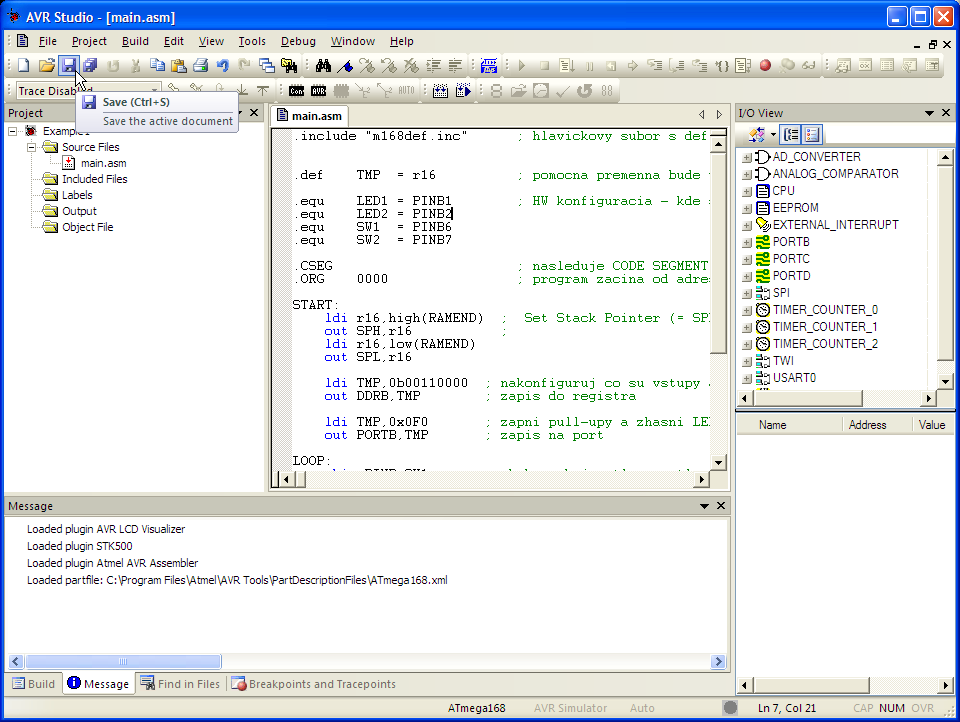AVR StudioTutorial
Zo stránky SensorWiki
for version 4
Starting AVR Studio
- Start the AVR Studio program by clicking on:
Start->Programs->ATMEL AVR Tools->AVR Studio 4
Once the program has started, you will be looking at a screen like this.
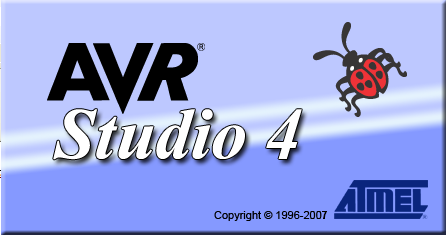
Creating a New Project
Immediately after the start, the popup window will appear. You can open an old project or create a new one. To create a new project, select "New Project".
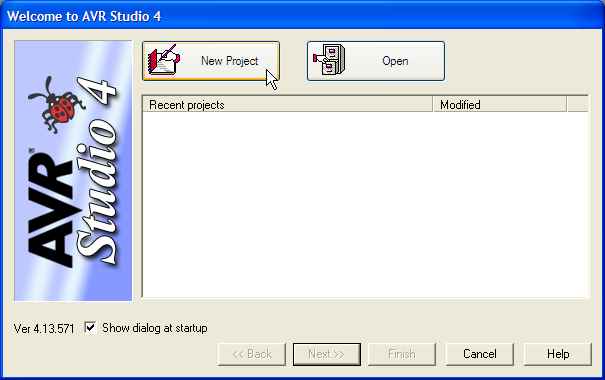
The dialog box shown in the next figure appears. In this dialog box you should enter the type of the project, its name and location.
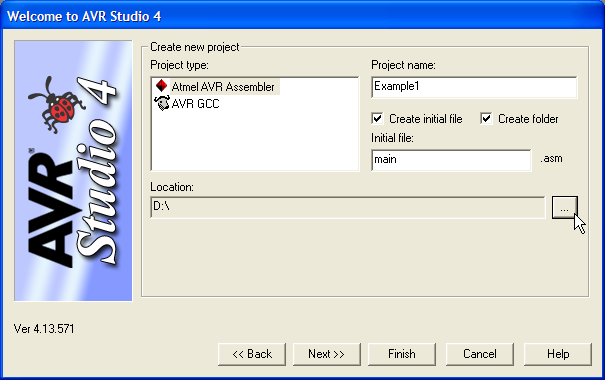
First, we have to select the Project type:
- Atmel AVR Assembler: This informs AVR Studio that is should use the built-in Assembler when compiling the project. We'll use this option in the following example.
- AVR GCC compiler: This option enables the user to use an external gcc compiler when compiling and linking the project.
Select the "Atmel AVR Assembler" Project type.
Next, we have to assign a name to our project. We choose the name Example1 here, but this could of course be an arbitrary name. Wa also choose the name of the main source file as main.asm, but this usually can be the same name as the project.
Next you'll have to select the project location. This is the location where AVR Studio will store all files associated with the project. We have used the location D:\ as the folder. If the folder does not exist, AVR Studio will automatically create it without any further notification.
Now press the 'Next' button to continue.
Selecting the Device
You will now get the window shown below. Since we do not have an In-Circuit Emulator attached, select AVR Simulator as Debug platform. In the Device list window you select the device for which you want to simulate the code. Select ATmega168 as the device.
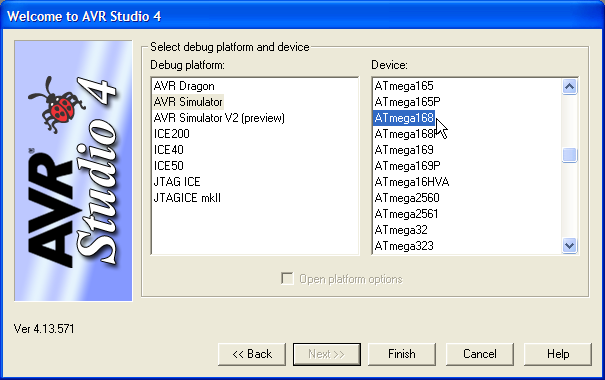
Project is now ready and full IDE window is opened.
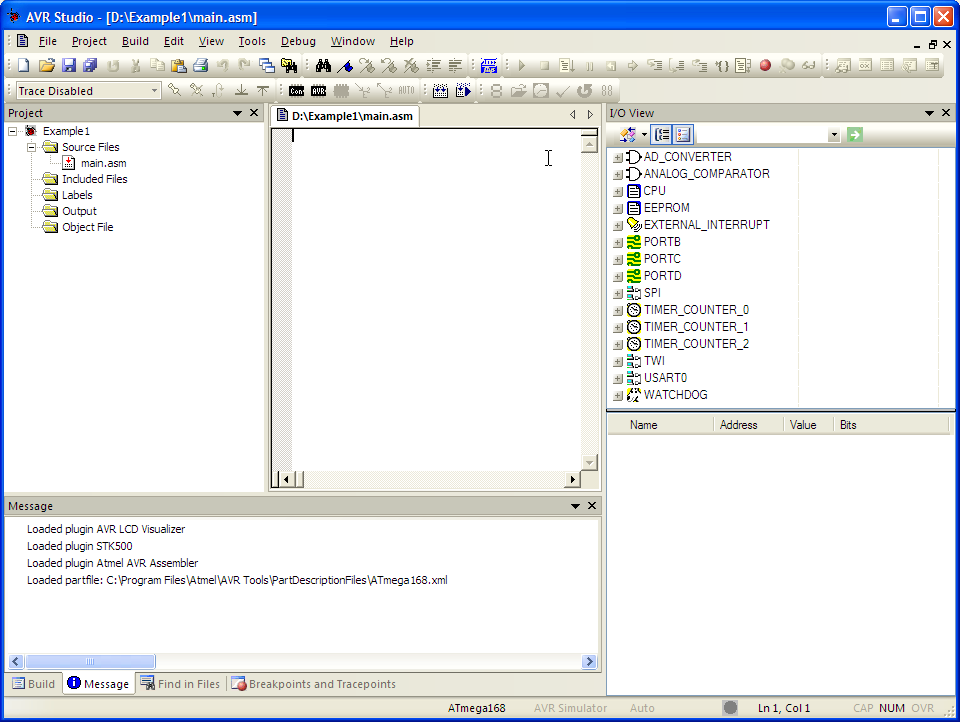
The whole project will now appear and look as shown in the figure below. In this view, you'll see all files associated with your project. It will be empty at this point. The file is empty and you'll have to manually enter the code, or you may Copy and Paste the code directly into the editor window.
